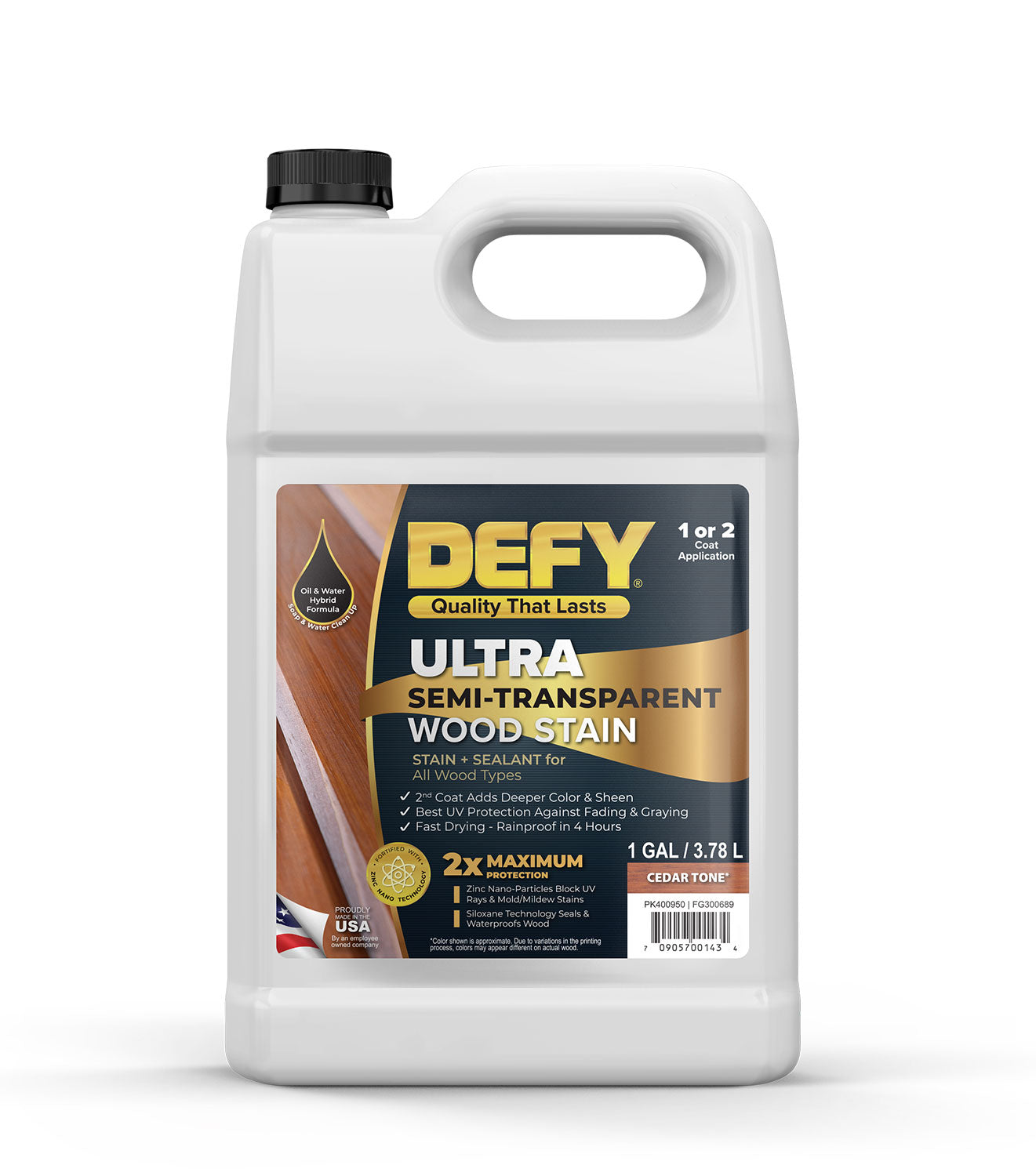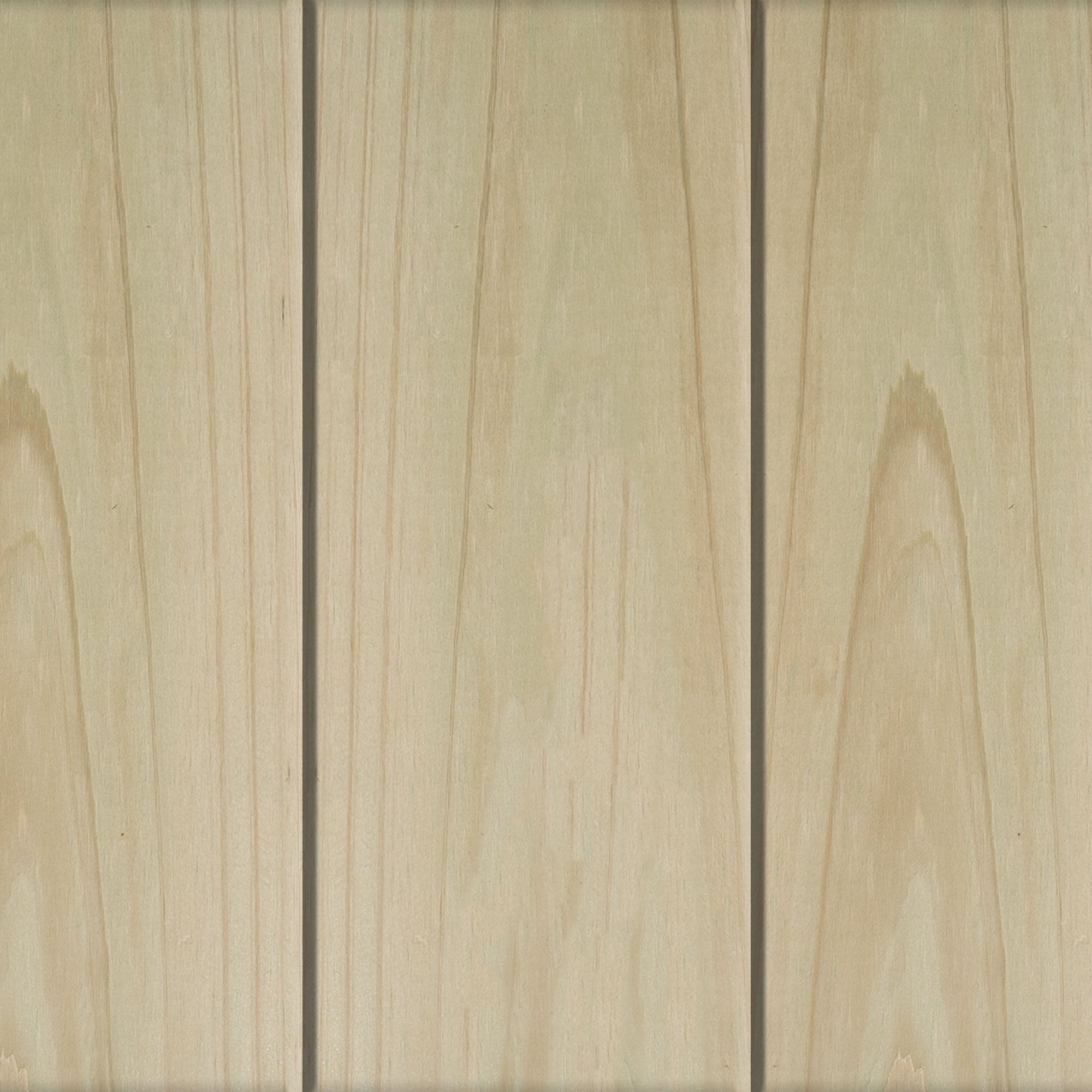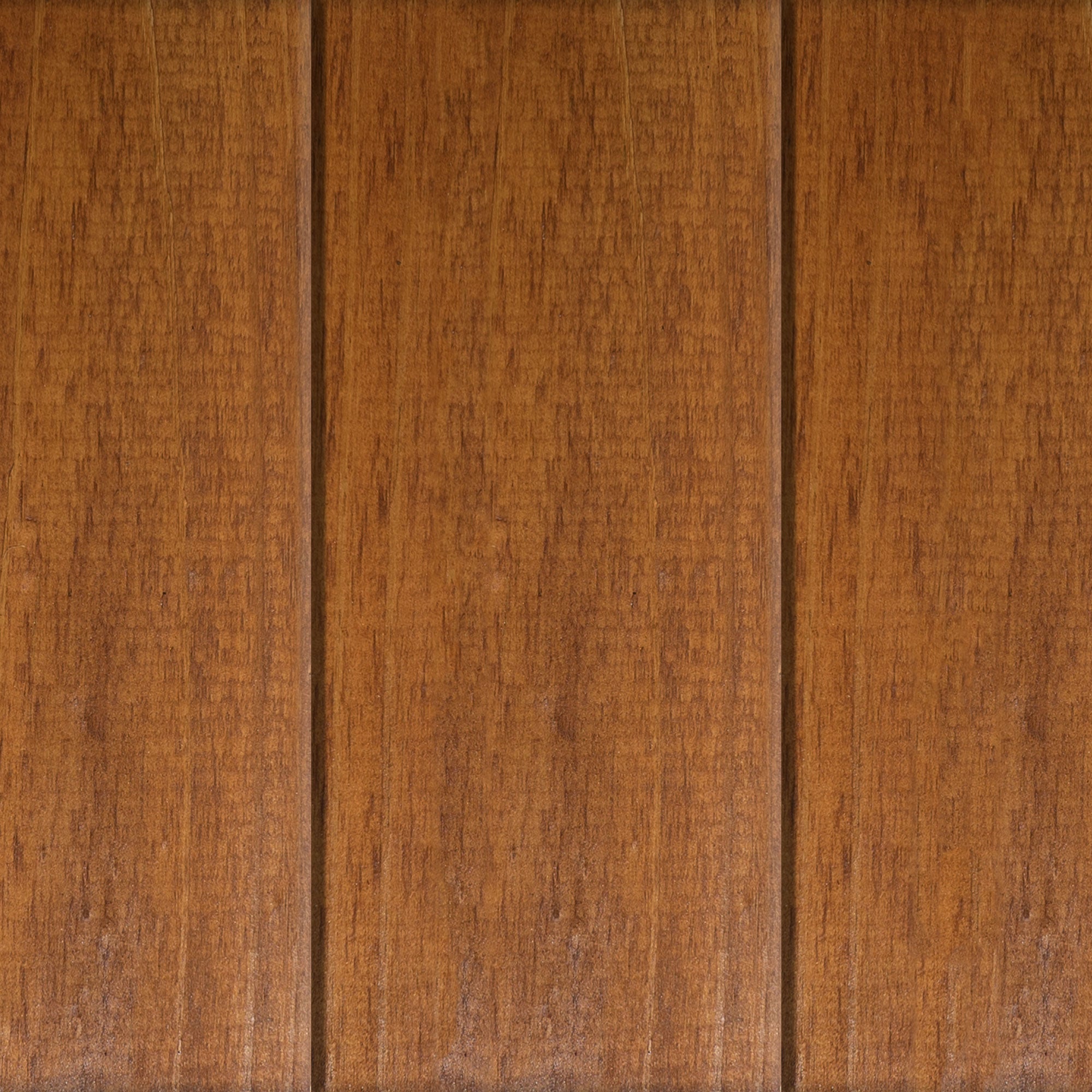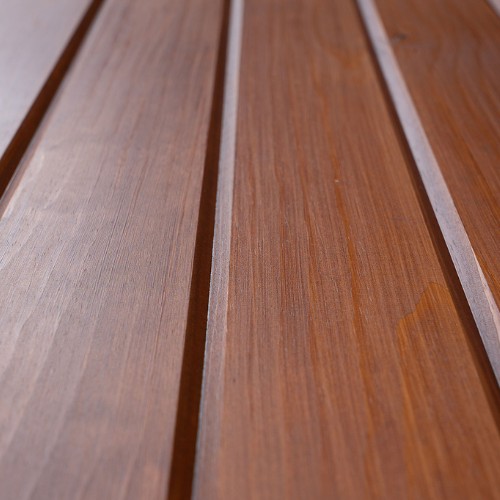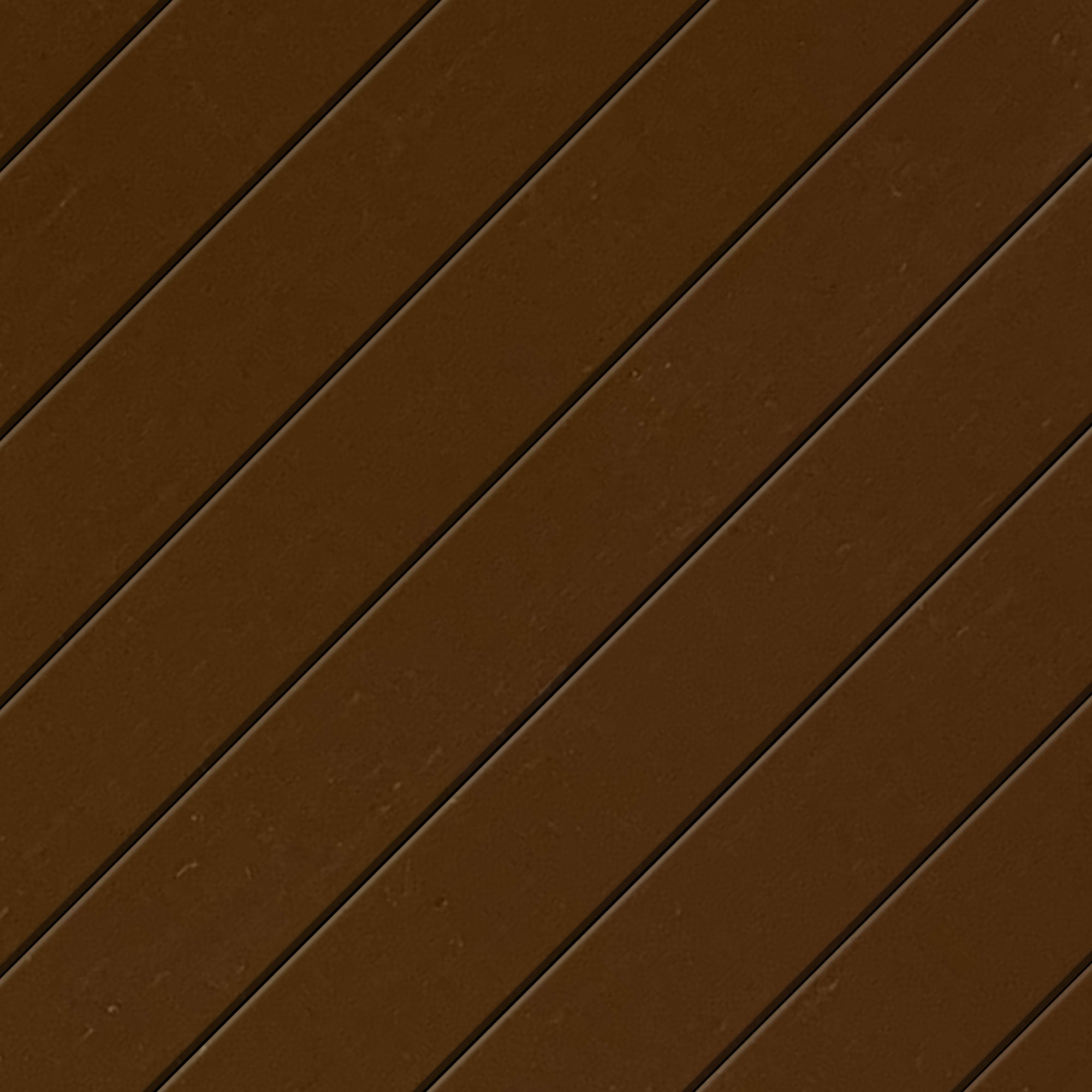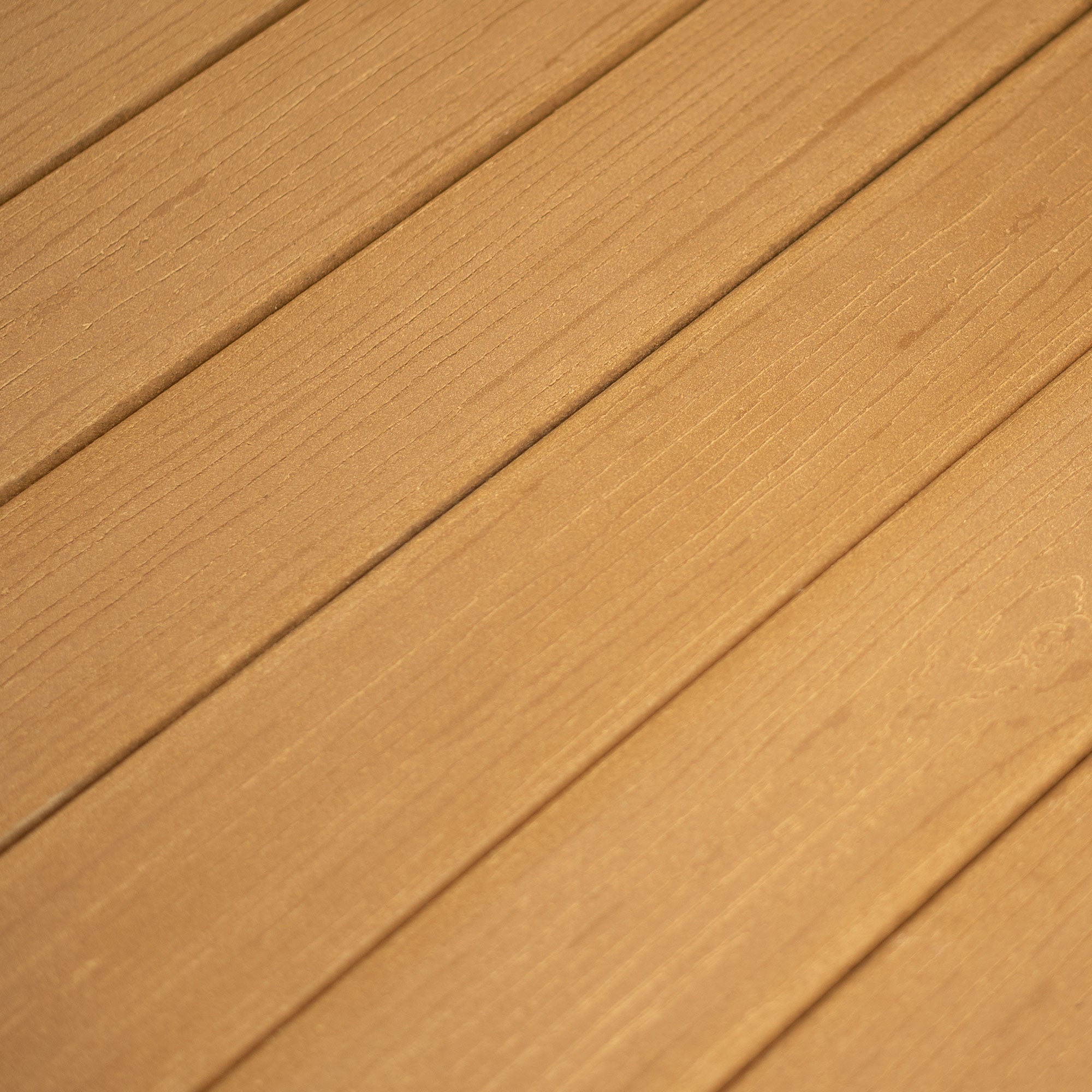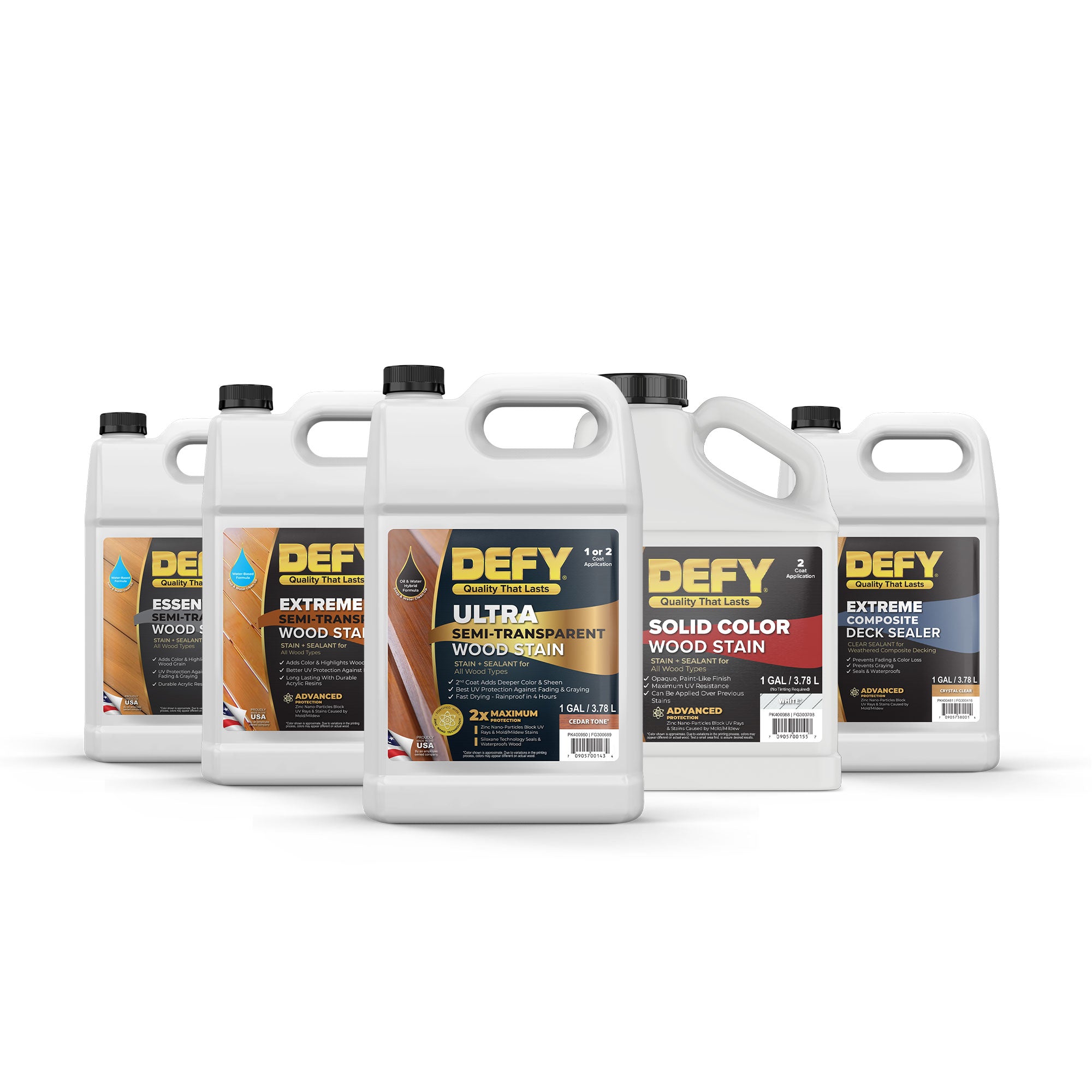SURFACE PREPARATION
Allow new wood to weather for 3 to 6 months to adequately dry out prior to application. Kiln dried lumber can be stained immediately.
STRIP: Do not use DEFY Extreme Wood Stain over painted or varnished surfaces. These surfaces must be stripped prior to application of the product. If sanding is necessary to remove older finishes, use a coarse grit sandpaper. Avoid using fine grit sandpapers as they can adversely affect the penetration of the stain.
CLEAN: All wood surfaces must be clean, porous, and visibly dry before applying DEFY Extreme Wood Stain. Use DEFY Wood Cleaner to remove mill glaze, mildew, graying and other foreign matter that might block surface pores and interfere with product penetration. Rinse thoroughly with a garden hose or power washer (maximum 1200 p.s.i.). DEFY Wood Cleaner will darken redwood and some types of cedar; however, this darkening will disappear once the wood is treated with DEFY Wood Brightener.
BRIGHTEN: While surface is still wet from cleaning, use DEFY Wood Brightener to neutralize the wood, restore the wood to its natural color, and open the pores of the wood, allowing the stain to be more easily absorbed.
APPLICATION
WEATHER CONDITIONS: Surface and air temperatures should be between 45°F and 95°F. Avoid application in direct sunlight. Do not apply to wet or water saturated surfaces, or when rain is expected within 12 hours. Stain may be applied to wood surfaces the same day as cleaning and brightening as long as surface is visibly dry before staining.
WATER TEST: After allowing the wood to thoroughly dry from cleaning and brightening, sprinkle a few drops of water on the wood. It should soak in within a few seconds. If it doesn't, then do not apply the finish. The wood is either not dry enough or not porous enough to accept the finish correctly. Test a small area for color and appearance before starting general application to assure desired results.
MIX WELL: Shake or stir contents before and periodically during use. Do not thin product. To ensure absolute color uniformity from container to container, mix at least one third of the product from a used container with the contents of a new one.
PROTECT ADJACENT AREAS: Use plastic, cardboard, and/or drop cloths to protect all adjacent non-targeted surfaces such as siding, windows, masonry, plant life, etc. from overspray and runoff. Immediately remove overspray from non-targeted areas with soap and water. Overspray that is allowed to dry will be difficult to remove; dried product cannot be removed from concrete and masonry.
USE THE RIGHT EQUIPMENT: Hand brushes should be high quality nylon or polyester. A pump-up sprayer, car wash brush, staining pad, or paint roller may also be used. If using an airless sprayer, use tips between .011 and .015, and use the lowest pressure that achieves a uniform spray pattern to minimize fogging and overspray. When spraying or rolling, always back brush to ensure a uniform application, and to break the surface tension of the wood so the stain will penetrate deeper, adhere better and last longer.
DECKS: Start by applying a single coat of stain to the railings, benches, and undersides of upper level decks (only one coat is required on undersides). Once underside is treated, immediately brush out all overspray, drips, etc. Treat horizontal surfaces last.
HORIZONTAL SURFACES: On horizontal cedar, mahogany, and other dense woods, apply only one coat of finish. For pressure treated lumber and other porous woods apply two wet-on-damp coats, waiting 10-20 minutes between coats. It is very important to not let the first coat dry completely before applying the second coat. Brush product into surface working out all drips, puddles, or areas of overspray before product dries. Do not over apply finish. To avoid the possibility of peeling, apply only as much finish as the wood can easily absorb. A sure indication of over application is a shiny appearance. Two coats are usually adequate, but depending on the porosity of the wood, more or less stain may be needed. Complete entire sections or to a natural break before allowing to dry. Never break in the middle of a board. Thoroughly coat the ends of boards or logs to prevent water penetration. All surface checks on logs should be thoroughly coated. Horizontal surfaces may require maintenance coats more frequently than vertical surfaces as they typically receive more direct sunlight as well as more wear and tear.
VERTICAL SURFACES: Start from the bottom and work up. Treat the entire length of a board before moving up. If necessary, brush or feather in to avoid lap marks. Brush in product before it dries and work out drips, runs, or overspray.
DRY TIME: To touch, 2 to 6 hours depending on temperature and humidity. Allow 24 hours for deck to completely cure before using.
CLEAN-UP: Clean tools and equipment immediately after each use with soap and water.
COVERAGE: With two coats, one gallon of DEFY Extreme Wood Stain will cover approximately 100 - 150 sq. ft., depending on wood texture and porosity.
PRECAUTIONS
May cause an allergic skin reaction. Keep out of reach of children. Avoid breathing fumes, dust, mist, spray, vapor. Wear eye protection, protective clothing, and protective gloves. Dispose of contents/container to comply with applicable local, national and international regulation.
FIRST AID
IF INHALED: Move the affected person away from the contaminated area and into the fresh air. If symptoms persist, seek medical advice. SKIN CONTACT: Wash off immediately with soap and plenty of water. Obtain medical attention if irritation persists. EYE CONTACT: Immediately flush eyes thoroughly with water for at least 15 minutes. Remove contact lenses, if present and easy to do. Continue rinsing. Seek medical attention if irritation persists. INGESTION: If swallowed, rinse mouth with water (only if the person is conscious). Do NOT induce vomiting unless directed to do so by a physician. If the person is fully conscious, make him/her drink water. Never give an unconscious person anything to drink. Immediately call a POISON CENTER or doctor/physician.
KEEP FROM FREEZING
VOC CONTENT < 250 g/L

